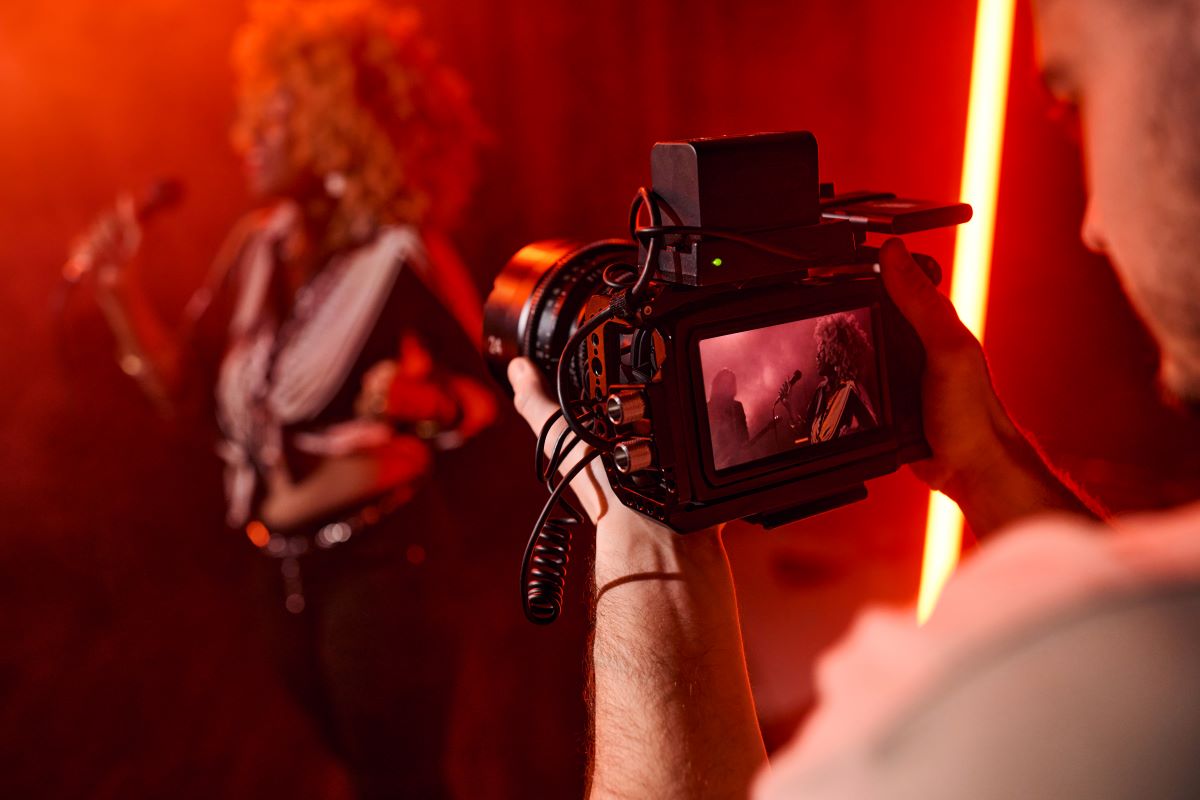
Video Production Company: Semiotics in Video Production
Imagine you are watching The Wizard of Oz, one of the most beloved films in cinematic history. Dorothy’s journey begins in a dull, sepia-toned Kansas, but when she steps into the fantastical world of Oz, the screen bursts into vibrant colour. That sudden change is not just for show—it is a deliberate choice that conveys meaning. The contrast between the muted colours of Kansas and the bright, technicolour world of Oz serves as a symbol of hope and transformation, signaling that Dorothy’s adventure is about to begin. This use of visual symbolism is an example of what Ferdinand de Saussure, a Swiss linguist and one of the founders of modern semiotics, explored in his theories about how meaning is constructed through signs. Saussure’s ideas on language and signs suggest that meaning is not inherent in objects themselves but in the relationship between a “signifier” (the word or image) and the “signified” (the concept or idea). In other words, things do not just have meaning on their own—they acquire meaning through context and interpretation. So, how does Saussure’s theory of semiotics, which was developed over a century ago, influence the work of a modern video production company today? The answer lies in how directors, editors, and cinematographers use “signs”—whether they are visual, auditory, or narrative elements—to convey deeper meanings to the audience. Every shot, every sound, and every colour can be seen as a signifier, working together to shape the viewer’s experience and understanding. In this article, we will explore how Saussure’s concepts of signs and symbols have impacted modern filmmaking and video production.
Who is Ferdinand de Saussure?
Ferdinand de Saussure, often considered the father of modern semiotics, reshaped our understanding of language and meaning. His groundbreaking work established that meaning is not inherent in objects or words themselves, but instead arises from the relationships between signs—whether those are words, sounds, or images.
Saussure introduced the concept of the sign, which he divided into two components: the signifier and the signified. The signifier refers to the physical form of the sign—the spoken word, written text, or visual image. The signified, on the other hand, is the mental concept or idea that the signifier refers to. For example, consider the word “cat.” The signifier is the word “cat”—the spoken sound or written letters you encounter. The signified is the mental image or concept you associate with a cat: a small, furry animal, typically with sharp claws and a distinctive meow. Saussure’s key insight is that the relationship between the signifier and the signified is not fixed. Instead, it is based on societal convention—there’s no natural reason why “cat” refers to this particular animal; it’s a product of shared linguistic agreement.
The crucial aspect of Saussure’s theory is the idea of difference. Meaning is constructed not through inherent qualities, but through the contrasts between signs. For instance, the meaning of “cat” exists not only because it refers to a furry animal, but also because it is different from “dog,” “bat,” or “rat.” Each word, or “signifier,” takes on meaning through its relationship to other words in the system.
This relational view of meaning has far-reaching implications for fields like video production. In filmmaking, visual elements such as framing, lighting, and colour all act as signifiers, creating meaning through their relationship to each other and to the broader narrative context. Just as Saussure’s theory suggests that meaning emerges through difference and context, a video production company can create a visual story by carefully selecting and juxtaposing these “signifiers” to create a desired emotional response from the audience.
How Saussure’s Work Influences Modern Video Production
For a video production company, Saussure’s theories provide a framework for creating and interpreting meaning in visual and auditory content. Just as language is composed of signs that convey meaning, so too is film and video. Directors, editors, and cinematographers manipulate images, sounds, and narrative structures to create signs that communicate complex ideas to the audience.
In video production, elements such as visual composition, sound, and editing are not just aesthetic choices; they are carefully constructed signs that convey specific meanings. For example, the colour red in a film might be a signifier of danger or passion, depending on the context, and the way a scene is framed can imply power dynamics or emotional states.
Elements of Video Production as Signifiers
In video production, every decision made—from the colour palette to the choice of music—can be viewed as a “signifier” in Saussure’s terms. These elements combine to create a visual language that imparts meaning. Some key signifiers include:
- Visual Elements: Lighting, framing, colours, and props act as signs that communicate specific messages to the viewer. A darkly lit scene might symbolise secrecy, while bright, warm colours could signify comfort and safety.
- Sound: Sound plays a critical role in the creation of meaning. Music, sound effects, and dialogue can all serve as signifiers that guide the audience’s emotional response. For instance, a tense string melody may indicate danger, while silence can heighten suspense or sorrow.
- Editing: The sequencing and pace of shots are used to control the flow of information, establishing how meaning is perceived. Fast cuts might convey urgency or chaos, while slow, lingering shots can suggest introspection or tension.
- Actor Performance: Actors’ gestures, facial expressions, and voice inflections function as signs themselves, articulating subtle emotions or larger thematic elements without the need for words.
How Directors and Editors Use these Elements
A key part of any video production company’s process is recognising the potential of these elements to act as signs. Directors and editors use these tools to play with meaning and guide audience interpretation. By manipulating the relationship between signs, they can shift audience perception and create emotional resonance. For example, using a specific colour or sound motif throughout a video can make it a recurring symbol with added depth.
Directors, in particular, are experts at weaving together visual and auditory symbols to build layers of meaning. A masterful film, like The Godfather or Schindler’s List, uses these techniques in ways that allow for multiple interpretations. These elements mirror Saussure’s idea that meaning is not inherent in the signs themselves but is constructed through the interplay between them.
The Role of Semiotics in Film and Video Production
Incorporating semiotic theory into video production is essential for creating layered, impactful content. Semiotics, the study of signs and symbols, has become an integral part of media studies and video production. It helps filmmakers understand how visual and auditory elements function within a system to convey meaning. For a video production company, applying semiotics allows them to develop more nuanced and engaging narratives.
Filmmakers use semiotic principles to build not only the plot but also the style and tone of the work. By using common symbols and visual motifs, filmmakers tap into culturally shared meanings, allowing the audience to interpret and connect with the story. This process can be observed in various genres of film, from horror to drama, where recurring symbols create a visual language that expresses deeper meanings.
Case Study 1: Semiotics in Schindler’s List
Steven Spielberg’s Schindler’s List (1993) is a powerful example of how semiotics can be used to deepen the narrative. The girl in the red coat, a stark colour in an otherwise black-and-white film, is a potent visual symbol that represents the loss of innocence and the human cost of the Holocaust. The red coat, which briefly catches the viewer’s attention, signals to the audience the contrast between life and death in a world of brutality. This signifier functions not only as a literal element of the story but also as a deeper, symbolic representation of hope, loss, and tragedy.
Case Study 2: Semiotics in The Godfather
In The Godfather (1972), director Francis Ford Coppola uses semiotic elements to create a narrative about power, family, and violence. The lighting and shadows, for example, serve as visual cues that reveal the moral complexities of the characters. The film’s most iconic symbol, the horse’s head in the bed, is a chilling signifier of control and violence. This object, while appearing simple, serves as a powerful visual metaphor for the film’s broader themes of power, loyalty, and retribution. Coppola’s expert manipulation of visual and auditory signs allows the audience to deeply understand the emotional and narrative stakes of the film.
Conclusion
As you sit back and watch a film or video, chances are, you are not always consciously aware of the signs at play. But if you pay close attention, you will start to notice how everything—every frame, every colour, every sound—has meaning. A video production company, much like Ferdinand de Saussure’s linguists, are essentially playing a game of interpretation, carefully orchestrating signs to guide you through their narrative. Whether it is the ominous shadows that hint at a villain’s entrance, or the quick jump cuts that signal a rush of excitement, video production has become an art of semiotics, where meaning is created through the relationship between the signifier and the signified.
In modern video production, Saussure’s theories continue to shape the way filmmakers approach storytelling. With a deeper understanding of signs, directors, cinematographers, and editors are empowered to manipulate symbols and their meanings, creating films that resonate long after the credits roll. So, next time you’re watching a video, try to see it as a language of its own. From the sound to the character’s wardrobe, every visual and auditory element plays a part in a larger conversation. What makes a video or film memorable is not just the plot—it is the silent conversation between the viewer and the creator, a dialogue built on layers of signs and interpretations.
Every element in a video should say something. If you are curious about how, Sound Idea Digital is here to explore that with you. Reach out today to discuss your next project.
We are a full-service Web Development and Content Production Agency in Gauteng specialising in Video Production, Animation, eLearning Content Development, Learning Management Systems, and Content Production.
Contact us for a quote. | enquiries@soundidea.co.za | https://www.soundideavideoproduction.co.za| +27 82 491 5824 |

